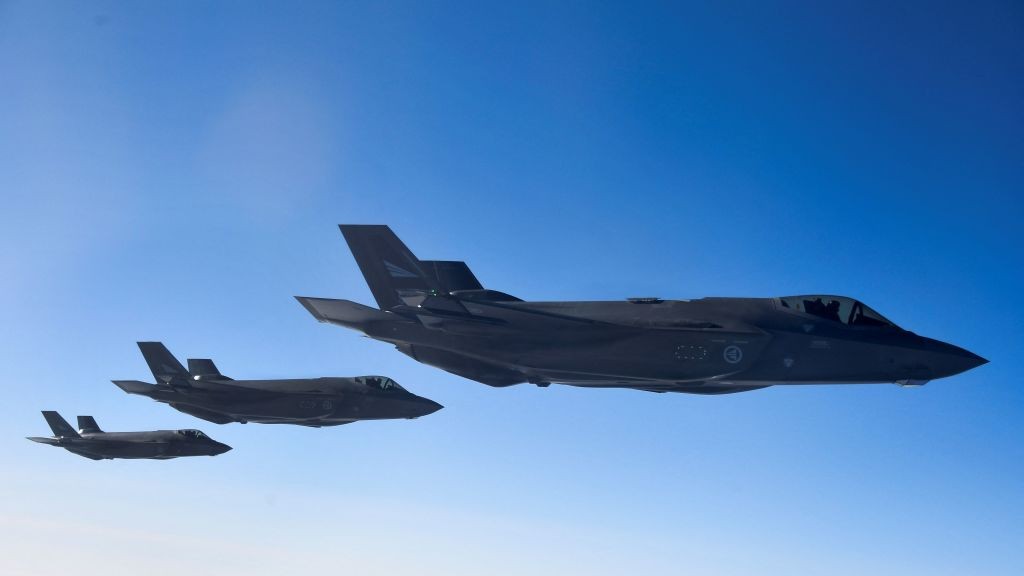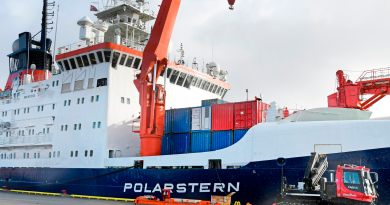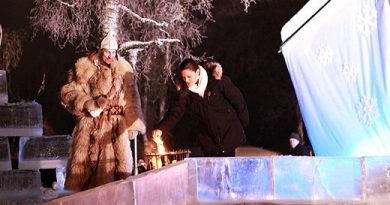14 nations ready for Nordic fighter jet exercise Arctic Challenge Exercise

Finland, Sweden and Norway are once again gearing up for the bi-annual cross-border Arctic Challenge Exercise, this year with a more powerful deterrence role than ever.
Finland is in charge this year as the planes now start to arrive at the four different military air bases in the three countries. Kick-off is May 29 and the exercise will see daily combat training in the skies until June 9. Playgrounds for the war games are from near the border with Russia in the east to the coast of the Norwegian Sea in the west.
“This is unique in the world. A large contiguous area with few inhabitants where we can train together,” says spokesperson for the Norwegian Air Force, Sigurd Tonning-Olsen, in a phone interview with the Barents Observer.
2023 is the first year Ørland Air Base near Trondheim is the operational center for the Norwegian contribution to the exercise. With the phase-out of F-16, Bodø Air Base inside the Arctic Circle was closed last year and most of the new F-35s fly out of Ørland.
14 nations are set to participate with fighter jets. In addition, NATO will deploy a few AWACS aircraft as command and radar control platforms.
In Sweden, Kallax Air Base in Luleå participates, while Rovaniemi and Pirkkala in Finland take part.
In total, a record high 150 aircraft and nearly 3,000 personnel participate.
“The Belgian Air Force is already here at Ørland preparing and training with its F-16s,” says Tonning-Olsen. “Fighter jets from the Netherlands will come next week,” he adds.
The United States and Italy will arrive with F-35 and the Czechia joins with JAS Gripen planes. About 50 planes are bound to fly from Ørland Air Base, of which 6 to 10 are Norwegian F-35. Other participating nations distribute their fighter jets and support aircraft at the bases in Sweden and Finland.
The Nordic nations already have about 40 joint training sessions annually, and talks are underway about a joint air force command now as Finland has joined NATO and Sweden is on the doorstep into the Alliance.
“Strategic role”
Defense analyst with the Norwegian Institute of International Affairs (NUPI), Per Erik Solli, says the Arctic Challenge Exercise was originally designed as a tactical training arena when initiated 10 years ago, but “now has an additional strategic role.”
Solli, himself a former F-16 pilot with years of experience in the skies above the Arctic Circle, points to the rapidly changing security landscape in Europe.
“The Russian war against Ukraine resulted in Finland and Sweden’s decision to join NATO, and a need for a more robust regional deterrence mechanism to balance Russia.”
“ACE 23 is now an important event to demonstrate the alliance’s ability to stage multinational defense of the high north if required, he says to the Barents Observer.
“This year’s event is the largest ever,” Solli says. In 2017 and 2019, about 100 aircraft took part, while the number was lower in 2021 due to the pandemic with about 70 planes.
Additional to the host countries Finland, Sweden and Norway, participating nations are Denmark, Great Britain, Canada, Germany, France, Italy, Switzerland, the Netherlands, the Czech Republic, Belgium and the United States.
Two fighting sorties daily
Sigurd Tonning-Olsen says there will be two sorties, deployments, every day. One in the morning and one in the afternoon. “In the first part of the day, we will fly along the west coast, from the Ålesund area north to Helgeland, about Brønnøysund.”
This will be the fighter jets flying out of Ørland. Meanwhile, the morning session for the aircraft based in Finland will have training in the skies between Sodankylä and Kajaani in the north, and in the area between Tampere, Oulu and Vasa further south, the Finnish Air Force informs.
Sodakylä is home to Finland’s Arctic Jaeger Brigade, located some 110 kilometers from the border with Russia.
“The Arctic Challenge Exercise has established itself as a Nordic exercise concept that offers participants the opportunity to jointly develop the cooperation of the 4th and 5th generation fighter jets and advanced anti-aircraft systems,” says Commander of the exercise Colonel Henrik Elo.
He adds that thanks to the wide area “We are able to train in tactically challenging situations with a large number of planes. The exercise gives the Finnish Air Force excellent experience in planning, leading and implementing large-scale air operations.”
Finland last year decided to replace its current fleet of F/A-18 with F-35, of which the first will arrive at Lapland Air Command in Rovaniemi in 2026.
No strategic bombers
“There are no plans to involve strategic bombers,” says Sigurd Tonning-Olsen. In the final stage of Arctic Challenge Exercise 2017, American B-52 made sorties over Norway.
In March this year, a pair of American B-52 bombers made headlines with a unique mission. First flying inside the Arctic Circle over Tromsø and Andøya, northern Norway, the planes continued south over Denmark. Over Poland, mid-air refueling took place before the two planes flew east of Sweden, into the Gulf of Finland and then over the Baltic States in what was the most comprehensive all-around Scandinavia and Baltics ever seen by the B-52.
Related stories from around the North:
Canada: U.S. report claims Trudeau told NATO Canada will never meet military spending target, CBC News
Denmark: Arctic security key in upcoming defence agreement: acting Danish defence minister, Eye on the Arctic
Finland: Russian cyber attacks, espionage pose growing threat to Finnish national security, Yle news
Greenland: Growing focus on Arctic puts Greenland at higher risk of cyber attacks: assessment, Eye on the Arctic
Iceland: NATO anti-submarine warfare exercise underway in North Atlantic, Eye on the Arctic
Norway: Russia-China coast guard cooperation big step, says Arctic security expert, The Independent Barents Observer
Russia: Russian Arctic rescue exercise attended by observers from Iran and Saudi Arabia, The Independent Barents Observer
Sweden: Russian spy ships surveying Nordic energy infrastructure, Radio Sweden
United States: U.S. nominates Alaskan as first Arctic ambassador, Eye on the Arctic



